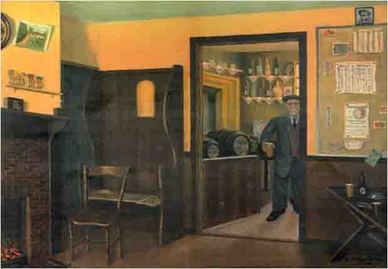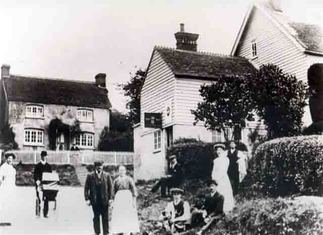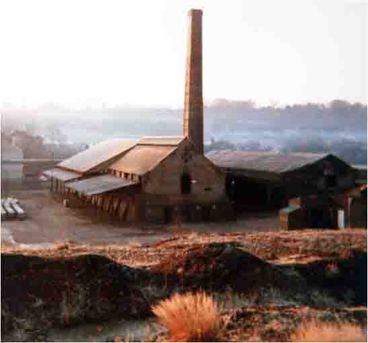A Brief History of The Wheatsheaf
|
Dotted around the walls of the pub are to be found, as you would expect, a variety of lovely photographs dating from the turn of the 20th century onwards, as well as a list of landlords since it was first licensed in 1853. Also to be found is the result of some painstaking research carried out by the 15th landlord, David Pace.
The Wheatsheaf is a rare unspoilt example of an early Victorian beer house. The building is probably 18th century, and the tithe map of 1839 describes it as a homestead surrounded by arable land, an orchard and wood, paying £2-1-10d per annum in tithe rent. It was at that time occupied by a farmer, William Wood, and owned by Theo King. The lines of the surrounding lanes were exactly as they are today. The Wheatsheaf as we know it was now complete in all it’s essentials, the bar was restricted to what is now the lower saloon bar area, served through a simple hatch, with stairs up to a club room. In 1880 the pub was acquired by Smith & Co, family brewers of Lamberhurst established in 1833. Also at about this time the Crowborough brick works were developed on adjoining land and three kilns were operated until their demolition in the late 1970’s, making way for what is now the Farningham Road Industrial Estate. By 1893 Crowborough had a population of 2800, and the tenancy of The Wheatsheaf was taken on by George Frampton. Though his wife died in 1917 he stayed until 1933, by some way the longest serving landlord, and likely to remain so. Smith and Co had in the meantime sold the pub to the Kemp Town Brewery of Brighton, who were in turn acquired by Charringtons after the Second World War, during which time the Wheatsheaf had been taking paying guests, as can be seen in the framed guest book from those years. |
The Licensing Act of 1830 had freed beer from licensing laws and duty. In a single year, 30,000 ‘beer shops’ sprang up. One such enterprising individual taking advantage of the legislation was John Knight, who lived with his wife Selina at Park Corner (as the bottom end of Mount Pleasant was then called). Mr Knight opened a beer house to supplement his income in 1853, and in so doing he became the first landlord of The Wheatsheaf. A few years later a small one up-one down cottage was added to the side of what is now the main pub building. Local legend has it that this cottage was in the way of what became the line of the London, Brighton & South Coast Railway, which was driven through Jarvis Brook in 1868, and so the cottage was moved out of the way up the hill. Whether this cottage was in fact John Knight’s original beer house, we shall probably never know. |
|
|
It was only after Charringtons sold The Wheatsheaf as a freehold that the license was upgraded from a beer house to sell all intoxicating liquor in 1972. Other changes followed; hitherto private accommodation and gardens were opened up to the public, and the current familiar layout of three bars around a central servery was established.
After 26 years as a freehold, The Wheatsheaf was sold to Harveys Brewery by David Pace. Pete and Becky Randall became the 19th landlords in June 2011 and have continued, together with Harveys brewery, to ensure that the best traditions of The Wheatsheaf and of the great English pub are maintained throughout a programme of subtle change and improvement both inside and out. |



